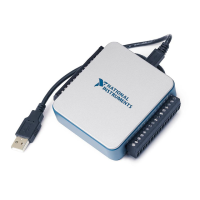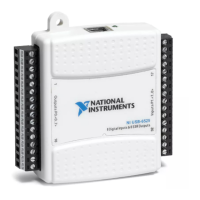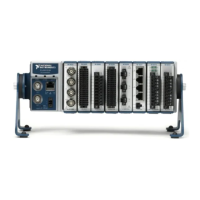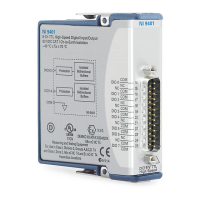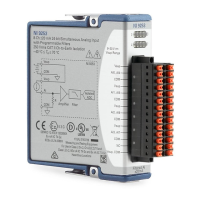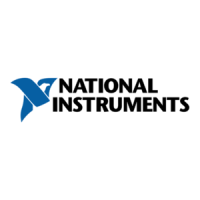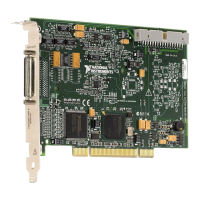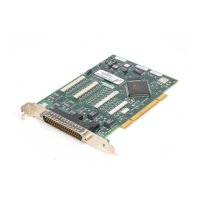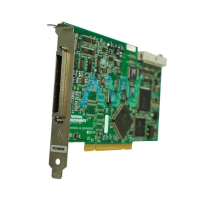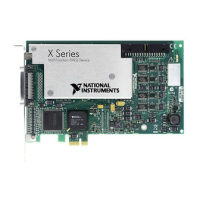NI USB-9233 User Guide and Specifications 12 ni.com
Passband
The signals within the passband have frequency-dependent gain or
attenuation. The small amount of variation in gain with frequency is called
the passband ripple. The digital filters of the NI USB-9233 adjust the
frequency range of the passband to match the data rate. Therefore, the
amount of gain or attenuation at a given frequency depends on the data rate.
Figure 10 shows typical passband ripples for two different data rates.
Figure 10. Typical Passband Response
The relative phases of these signals also have a frequency-dependent delay.
The variation in the phase delay with frequency is called the phase
nonlinearity. Figure 11 shows the phase nonlinearity for data rates above
25 kS/s and at or below 25 kS/s. The phase nonlinearity scales directly with
the oversample rate, so the two curves normalize the signal frequency to the
data rate.
2520
0.025
0.000
–0.025
–0.050
151050
Gain (dB)
Frequency (kHz)
Data Rate
= 25 kS/s
Data Rate
= 50 kS/s
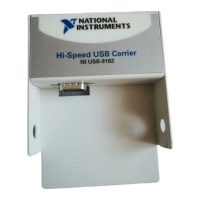
